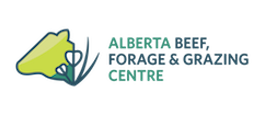Projects
Summary of Research and Extension Projects by Strategic Goals: Click to expand
1. Reduce winter feeding costs by 50%
- Supported by sixteen research and extension projects, investigations into variety development, variety evaluation, higher energy forages, and grain processing will assist in decreasing winter-feeding costs for producers. Success stories include the development of sainfoin and alfalfa germplasm with higher oil (energy) content in vegetative tissues, the evaluation of new varieties in a “cow” context at an earlier point in the breeding process – determining the ability of a certain feed to provide profitable gain. In addition, several new high-performing varieties of two and six row barley, and triticale were commercialized.
2. Reduce environmental footprint of the cowherd by 15%
Supported by twenty research and extension projects, determining the factors related to decreased methane production and improving nutrient management practices will help beef producers decrease their environmental footprint. In addition, a better understanding of carbon sequestration, water use efficiency, and biodiversity will also contribute to a reduced environmental footprint. An example of success is the generation of the hypothesis that there is an association among different species of bacteria and copy number within each RFI group, which represents a significantly deeper understanding of host-bacteria genome interactions.
3. Improve cow efficiency by 15%
Supported by thirteen research and extension projects, elucidating the factors contributing to differences between animals in feed efficiency, the interactions between feed efficiency and feed stuffs, as well as ways to improve the feed efficiency of the mature cow herd will not only improve producers’ bottom lines, but also contribute to reducing the environmental footprint of beef production. Success stories include: A commercially available test for determining heterosis, along with an investigation of what constitutes “optimal” heterozygosity and completion of the first selection cycle of hybrid bromegrass with improved NDF, which created divergent populations for this trait.
4. Reduce backgrounding costs by 50%
Supported by twenty-six research and extension projects, incorporation of new or better adapted forage varieties, higher energy feedstuffs, interaction between feed quality and feeding management, and better grazing management will improve the performance of backgrounded cattle while decreasing costs. A success story looking at efficiency interactions with forage quality and diet formulations discovered a 33% to 44% reduction in feed conversion depending on the type of silage fed and the ration formulation used. 3% of the improvement in feed conversion with the triticale silage-based diet was due to type of silage, while 97% was due to diet formulation. For the barley silage-based diet, 60% of the improvement in feed conversion was due to the type of silage and 40% was due to feed formulation. Improvement in feed conversion was estimated to result in a 29% (triticale silage) to 40% (barley silage) reduction in methane emissions intensity and a 19% (triticale silage) to 28% (barley silage) reduction in the total cost of gain during the backgrounding period.
5. Improve late summer/fall pasture productivity by 30%
Supported by nineteen research and extension projects, developing forage varieties and management practices to mitigate the decline in forage yield and quality in late summer and fall will reduce overall cost of production and help to ensure the nutritional requirements of cows are met year-round. Success stories include the development of alfalfa populations with reduced fall dormancy that are still winter hardy, and best management practices for pasture rejuvenation.
6. Build and Maintain Research and Extension Capacity
Supported by all of the activities and projects of the Centre, this key goal underpins all of the other goals. Without adequate research and extension capacity, this entire initiative, the strategic goals, and the progress made to date is lost, and unlikely to be recovered.
The activities of the Rancher Researcher Pilot are progressing very well, with additional economic data collection, the application of SOIL GROWS GOLD benchmarking, baseline forage and soil analysis and further conversations with the participants about adoption attitudes. The larger KTT project has already developed two decision making tools to assist producers in critical analysis of feed test results and to price feed based on quality that are available on beefresearch.ca. The KTT project has also been instrumental in preserving the knowledge that was available on foragebeef.ca. These two projects are critical components supporting all of the Strategic goals of the Centre. They have also contributed greatly to the coordination of extension initiatives within the province among multiple organizations, reducing duplication and maximizing resources while increasing impact and improving audience reach.
Key capacity is in place with adequate resourcing to fulfill current activities. However, it is important to note that specific capacity gaps in western Canada have been identified (primarily grazing management/utilization/agronomy, as well as forage beef “systems” expertise - combining plant and animal interactions in a cohesive manner). In addition, the need for adequate succession planning to re-fill potential upcoming retirements at various institutions has been recognized. As the Centre continues to grow and excel, it is likely that administrative capacity will be needed, at least on a part time basis, to adequately oversee all Centre activities.

